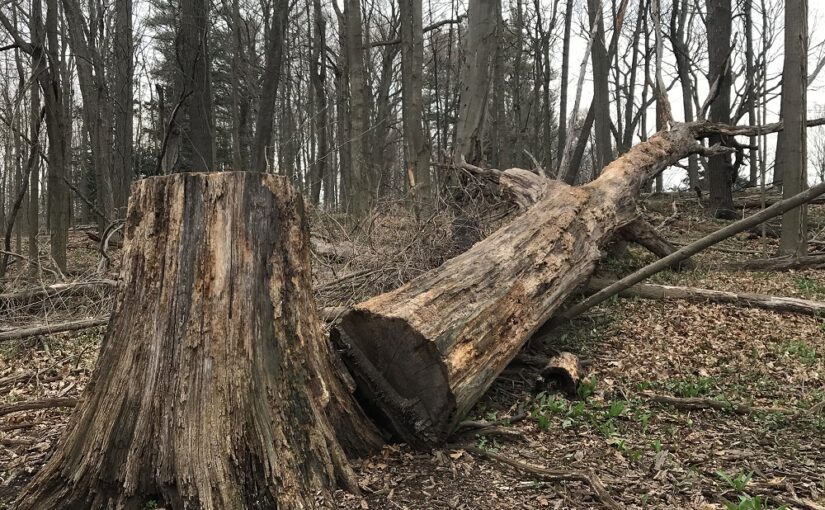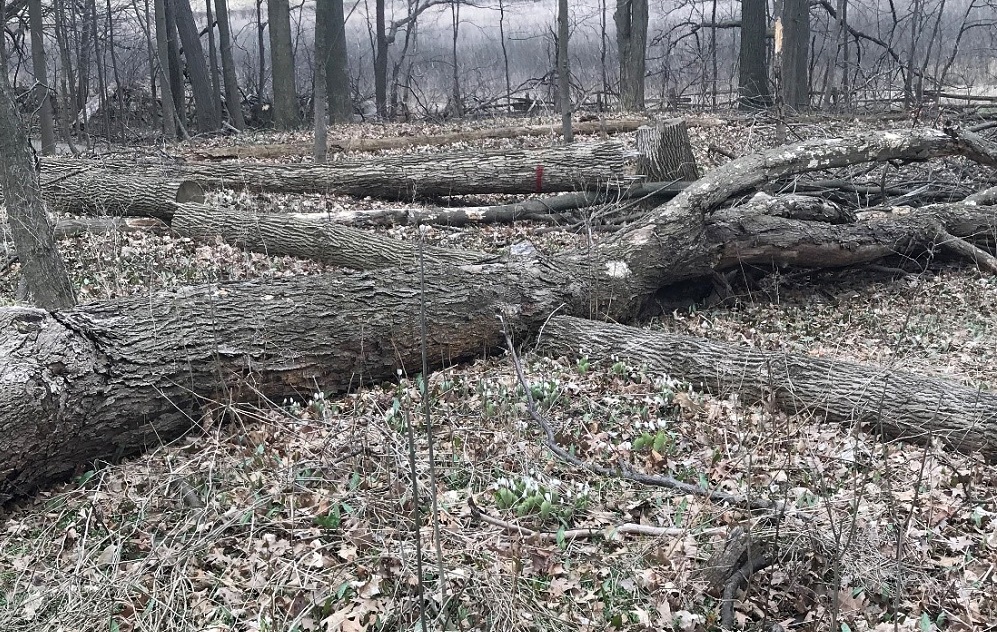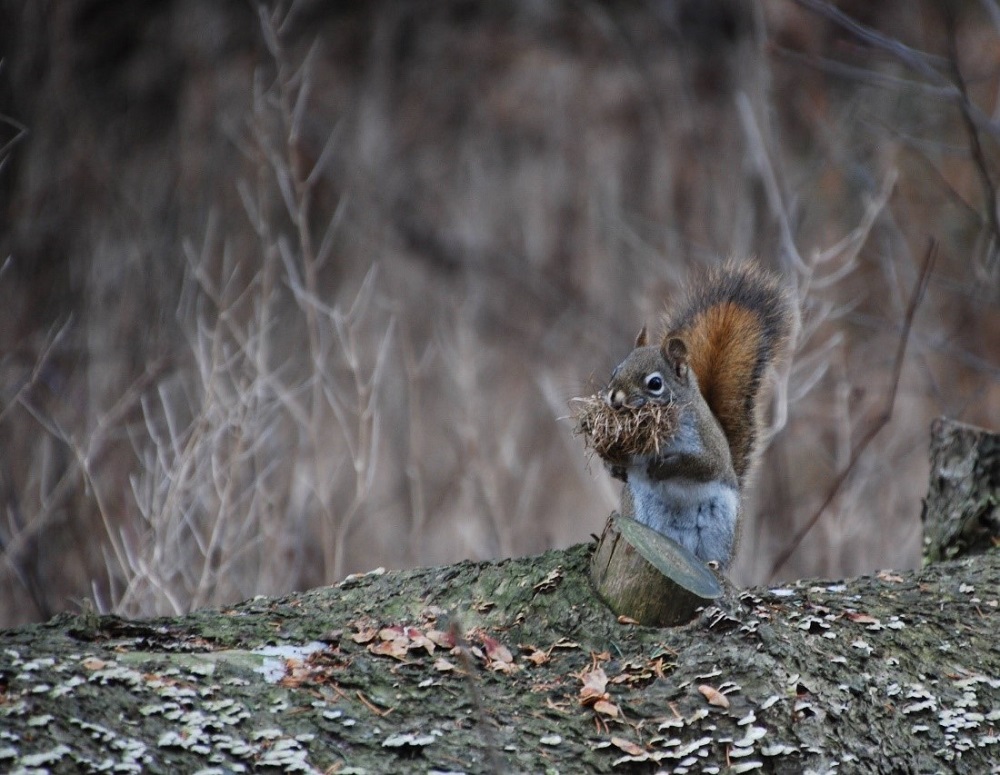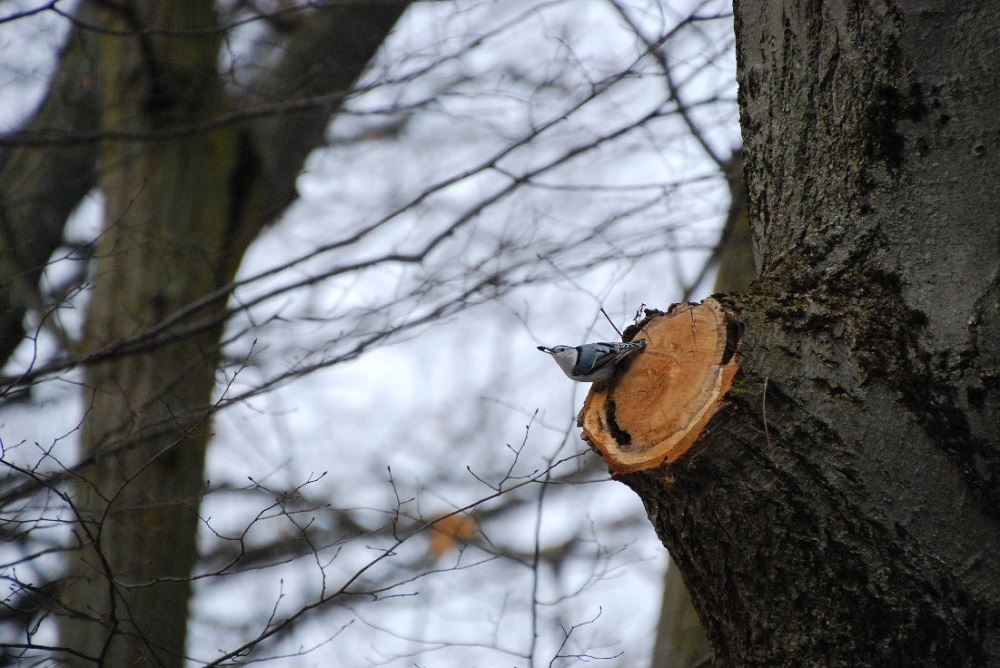Today’s post comes from Sheila Wiebe, a marketing and development specialist at Bronte Creek Provincial Park.
Provincial parks are all about protection.
We protect significant natural ecosystems and habitats while offering many outstanding and sustainable recreational opportunities for the people of Ontario.
This isn’t always an easy task. Invasive species have challenged our ecosystem management, knowledge, and skills. Keeping an area safe for park visitors while allowing natural processes to happen can be challenging.
This is especially true for managing our forests. We are often asked by our visitors: why do you leave fallen, dead trees in the forest?
If a tree falls in a forest, does it get cleaned up?
When you see a fallen tree in a provincial park, you may think this means the park is not being properly maintained.
In fact, it’s the opposite. A forest is a living entity, and it is ever-changing. Letting the forest follow its natural progression IS taking care of it.
Old trees die, opening up the canopy to shine light on the forest floor. New trees sprout to take their place.
These changes can take many years, or can happen more rapidly when forest pests are involved. For the past 10 or more years you’ve likely heard about forest threats like Emerald Ash Borer, Beech Blight, Spruce Budworm, or Spongy caterpillars.
Many forested areas have been negatively affected by these pests, but we promise there is a positive side to this — keep reading!
If we can, we leave dead trees that fall in a provincial park. When a tree must be cut down, we remove the portion that crosses a path or road, leaving the rest where it lies.
We regularly assess the trees along our managed trails. If a tree is within the “fall zone” of the path, it is cut as a public health hazard. That’s why you’ll see many trees lying on the forest floor.
Some park visitors view these dead trees and logs as eyesores and want them cleaned up.
But these dead trees have a critical role in our ecosystems. Let’s change the way we view them!
A tree’s second life
Snags (or standing dead trees) are like apartment buildings. Fallen logs are like nature’s bungalows.
Woodpeckers, squirrels, snails, and salamanders need the tunnels and nesting cavities that these apartments and bungalows provide. Their carbon-rich fibres and cell nutrients provide birthplaces for other trees and smaller plants.
Dead trees provide food for Bark Beetles, nesting cavities for woodpeckers, and platforms for hawks and eagles.
These structures provide roosting branches for owls and denning sites for foxes, hunting perches for Kingfishers and display stations for Ruffed Grouse.
Snags and fallen logs are also foraging sites for a wide variety of wildlife. First on the scene are insects and fungi, closely followed by millipedes, earthworms, spiders, and earwigs.
Much like the “Old Lady Who Swallowed a Fly”, the presence of invertebrates in a dead tree leads to bigger and larger animals!
Woodpeckers searching for food will excavate holes, providing nesting sites for birds and small mammals.
Eventually racoons, skunks, weasels, bats, and mice will use the cavities in both snags and logs as shelter and dens.
In your own backyard
Not all snags or downed logs are found in a forest. You may have fallen wood in the areas around your home.
We encourage you to leave fallen wood where it lies when possible, and embrace the “messiness” of your backyard!
If there’s a dead tree on your property, cottage lot, or lawn, it too is an important resource for urban wildlife.
Protecting our parks
Remember: we are balancing offering recreational opportunities for our visitors with protecting our natural spaces from human impact, urban development, and other environmental threats.
We know that some of our visitors may expect manicured grassy areas with tended garden-like paths when they visit us, but that is not what we do.
Fallen wood is one piece of a large puzzle that makes up the ecological integrity of our protected areas.
Want to learn more? Find out about the importance of driftwood and why we ask our visitors not to build stick forts.





